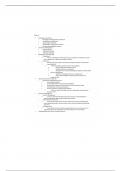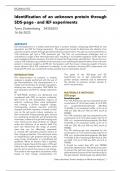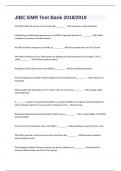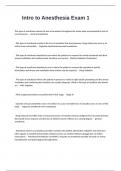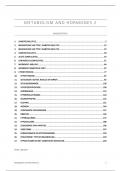Challenges of Leadership
o Managing and leading diverse workforces
o Competing on a global scale
o Being socially responsible
o Responding to change and uncertainty
o Harnessing technological advances
The Pillars of Management
o Strategic Position
o Organizations Design
o Individual Leadership
Management and Leadership
o Management
The act of working with and through a group of people to accomplish a desired
goal or objective in an efficient and effective manner.
o Leadership
The ability to drive change and innovation through inspiration and motivation
Leadership Skills
Differ according to people's level and responsibilities
Technical skills are important early on
Strategic abilities as one advances
Managers focus financial reporting, planning, recruiting of talent
and learn development
Middle-level management focus on interpersonal
Senior level management direct, supervise and focus on
conceptual skills.
Historical Perspective on Business
o Bureaucratic organization structure
Propose by Max Weber
A clear differentiation of tasks and responsibilities
Coordination through strict hierarchy of authority and decision rights
Standardization of rules and procedures
Vertical separation of planning and execution
Plans are made in the upper ranks of an organization and executed in
the lower ranks
Theories of Management
o Scientific Management
A focus on how jobs, work, and incentive scheme's could be designed to
improve productivity using industrial engineering methods.
o Human Relations Movement
The belief that organizations must be understood as systems of independent
human beings who share a common interest in the survival and effective functioning
of the firm
o Contingent View
A view of the form where effective organizational structure is based on for or
alignment between the organization and various aspects of it's environment
Changing Perspectives on the Purpose of Business
, o Managerial View
A business framework where the firm is seen as a mechanism for converting raw
materials into products to sell to customers.
Shareholder View
A business framework where the job of top managers is to produce the
highest possible stock market valuation of the firm's assets
Stakeholder View
A business framework that identifies and analyzes multiple groups that
interact with the firm and attempts to align organizational practices to satisfy
the needs of these various groups.
Predicting Stakeholder Responses and Activities
o Contingency Planning
The systematic assessment of the external environment to prepare for a possible
range of alternative future for the organization
o Trend Analysis
A tool where key variables are monitored and modeled to help predict a change
that might occur in the environment
o Contextual intelligence
The ability to understand the impact of environmental factors on a firm and the
ability to understand how to influence those same factors
Chapter 2
Managing in difficult times
Business Leaders
o Respond to changes in the global environment to try and change it
o Lobby to influence the governments to in business
o Identify growing market niches
Globalization
o Integration and interdependence of economic, technological, sociocultural, and political
systems across diverse geographic regions
o Advocated by leading economists and politicians post World War II
o Movement led to creation of several international trade agreements
Table 2.4 Selected Regional Trade Agreement (in BOOK)
Selected Regional Trade Agreements
Trade Countries Represented
Agreement
ASEAN Brunei Darussalam, Cambodia, Indonesia, Laos,
(Association of Malaysia, Myanmar, Philippines, Singapore, Thailand,
South East Vietnam
Asian Nations)
CACM (Central Costa Rica, El Salvador, Guatemala, Honduras,
American Nicaragua
Common
Market)

